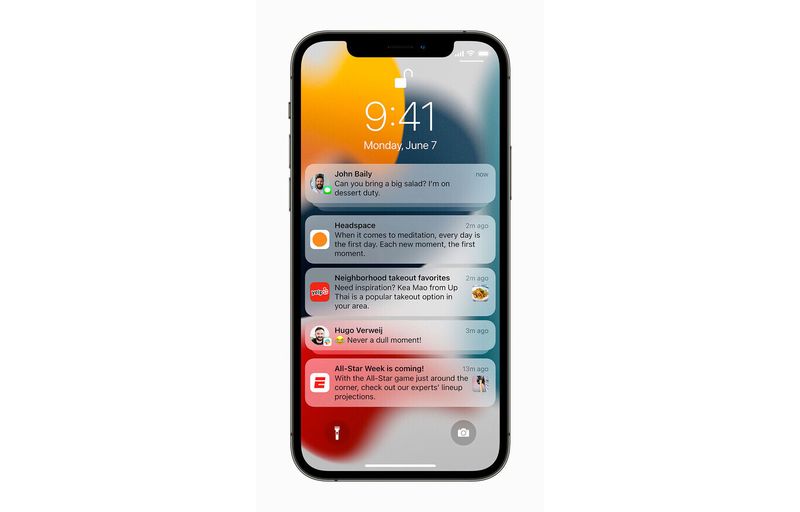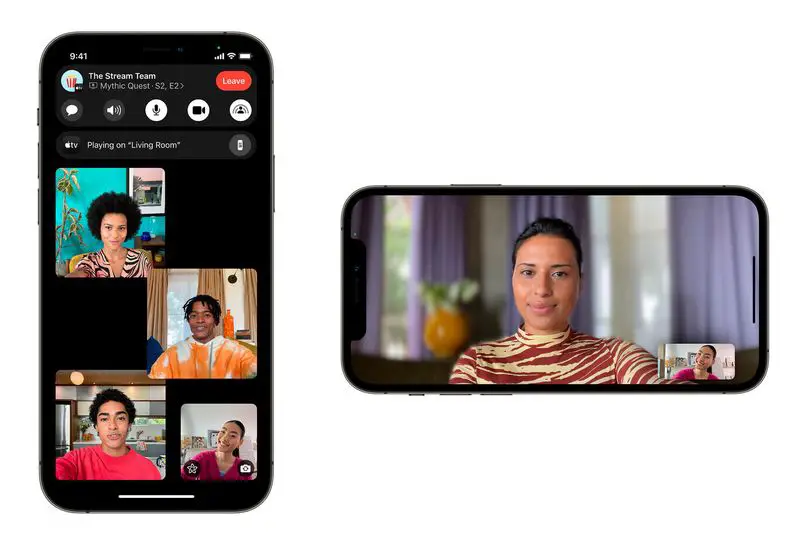We’ve compiled a rundown of the new features in iOS 15, Apple’s next mobile operating system. It’s a version that pays close attention to little details, such as the preinstalled applications from Apple. Among its new features, there is also much prominence of FaceTime and other apps.
We are going to offer you this list so that you can see at a glance the main functions in a summarized way. In addition, we will also add the list of iPhone models that will be compatible with this new version of the operating system, as well as for instructions on how to receive the update.

Main new features of iOS 15
Let’s now tell you what are the main new features of iOS 15, the new version of Apple’s mobile operating system.
- Redesign of notifications: One of the first changes you will notice in iOS 15 is in the notifications, which change grouping and design. The list will be prioritized so that the less essential items are not distracting, and icons of people and larger images will be used.
- Concentration mode: You may now add a new feature that allows you to pick a usage profile, such as personal or work for example. You can build a home screen for each by choosing specific applications and widgets, as well as the alerts you wish to receive. Thus, the same phone can be prepared for different usage scenarios, and adapt to your different routines. This mode can be used on many devices so you may send the profiles to your tablet or another smartphone after they’ve been set up.
- Photo search from Spotlight: Apple improves the native iOS search engine, and now you can use it to find photos you have on your mobile. The system will recognize places, people, and even handwritten notes, and will be able to associate content with a contact.

- FaceTime compatible with Windows and Android: The Apple video calling software is one of the primary protagonists of iOS 15, and several new functions are devoted to it. For example, you will be able to generate links to enter calls from a browser, which opens the door to being able to be used from Windows or Android. It will require support for H.264 encoding.
- FaceTime improves its sound: Spatial sound is used to simulate real-time discussions, with the interlocutors heard at various locations as if they were in different parts of the room. In addition, there will be a refined sound so that the voice can be heard better and the noise can be isolated.
- Grid video and blurred background in Facetime: FaceTime also incorporates the new Grid Video view for group calls, where it is better highlighted who is speaking at any given moment. In addition, there is a portrait mode to blur what is behind you while you are on the video call.
- SharePlay for sharing on calls: Another great feature coming to FaceTime is the SharePlay feature, which you can use to share music, video, and other items during calls. It is compatible with Apple TV, meaning you can also watch movies with others on the big screen while connected to a call. It supports screen-in-screen PiP mode, so if you minimize FaceTime or are watching some content, you’ll still see a frame overlay with the call.
- More customizable Memojis: Added options, with more than 40 new outfits, more accessibility devices, and colors or designs.
- Redesigned Apple TV virtual remote: It looks more like the physical remote.
- Find iPhones even if they were turned off: The Find option will allow finding iPhones even if they are turned off, and if they are still paired with the Activation Lock, even after being restored.
- Messages improve content sharing: The Shared for your feature is added, which allows us to interact directly with the person who sent it when sharing a link. It also makes it easier to share Apple Music playlists, or have a specific collection in Photos for each contact or group.

- Live Text for photo recognition: It is a kind of Google Lens, but integrated directly within the camera application, in the photo gallery when viewing photos, or when opening screenshots. What it does is recognize texts and transcribe them for you, as well as objects, scenes, books, pets, and other items.
- Add music to your moments: With the Memories feature, you can add music from Apple Music to videos that are generated with the photos you have as a keepsake. This Moments feature has always had its music, and now you can add your songs from Apple’s service.
- EXIF information in Photos: The Photos app will now allow you to view the EXIF data of your saved images and videos.
- Editing location, date, and time in Photos: No more need to buy a third-party app to edit some metadata of your photos, such as location, date, or time. Now you will also be able to tidy up old photos taken with old cameras without GPS data or with incorrect dates and times.
- The wallet now supports keys: Apple’s credit card and boarding pass storage app now also adds support for digital keys. You’ll be able to add everything from car keys to theme park ticket systems to hotel cards. These will be shared with the Apple Watch so you can use them from there.
- Removal of old passes in Wallet: The app will automatically hide older passes from Wallet once they have been used.
- Siri Offline: Siri’s voice recognition engine is now performed inside your device, so you can interact with Siri faster, and do more actions offline.
- Redesign of the Weather app: The information will be displayed in a more compact and detailed way. First, you will see the main warnings, and then the possibility to expand the information about them. Some things do not change, such as the weekly forecast and the widgets of the sections, but everything is more organized and with more information.
- Maps receive new maps: The Maps will receive an update with the countries.
- Forecasts in Maps locations: When you are consulting a location in the Maps app, now it will show real-time information such as temperature, rainfall, and other data such as elevation or monuments and details that are in the area.
- Improvements in Maps navigation: When you enter Maps navigation mode, lane directions and more complex intersections will be displayed in three dimensions.
- App privacy report: Apple will implement an App Privacy report, which will let you know how each app treats your personal information. You will be able to know, for example, with whom your data has been shared in the last few days, and in Safari you will see the attempts to access your information by third-party apps.
- More information in the Health app: Details such as the cadence of your steps, speed, stride, and other data related to the way you walk are added.
- Share your health data: The Health app now adds a tab to share your data with family members, doctors, or caregivers.
- Two-factor codes are generated: iCloud Password Keychain can generate two-factor codes, so you don’t have to resort to third-party apps like Microsoft Authenticator.
- Extra iCloud space for setting up new devices: iCloud will give you all the space you need for free for three weeks to back up your old device and dump it on a new one.
- New Widgets: New official widgets arrive for Search, Contacts, Game Center, Sleep, Mail, or App Store.
- And if you do not want to upgrade to iOS 15: From now on, on iOS, you will be allowed to stay on the previous version, iOS 14 in this case, and receive only security updates.
Supported devices
Now, we move on to tell you the list of devices compatible with iOS 15. There is good news, and it is that they will receive the update a lot of iPhone generations, from the 6s onwards.
- iPhone 13 Pro Max
- iPhone 13 Pro
- iPhone 13
- iPhone 12 Pro Max
- iPhone 12 Pro
- iPhone 12
iPhone 12 Mini - iPhone SE (2nd generation)
- iPhone SE (1st generation)
- iPhone 11 Pro Max
- iPhone 11 Pro
- iPhone 11
- iPhone XS Max
- iPhone XS
- iPhone XR
- iPhone X
- iPhone 8 Plus
- iPhone 8
- iPhone 7 Plus
- iPhone 7s
- iPhone 6s Plus
- iPhone 6s
- iPod Touch (7th generation)
How to install iOS 15?
To install the new iOS version, go to your phone’s settings and select the General option. Open the Settings menu on your device. Select the Software Update option and then scroll down to find out if there are any new iOS versions available.
But you don’t have to worry too much, because updates will also be notified automatically, since iOS checks for new versions every day. Checking for them is only for when you can’t wait any longer and want to keep checking.





